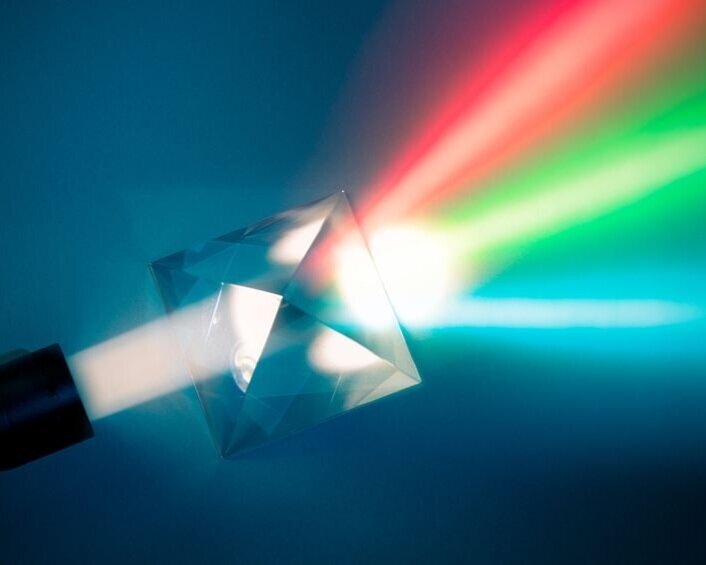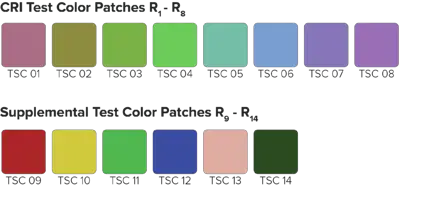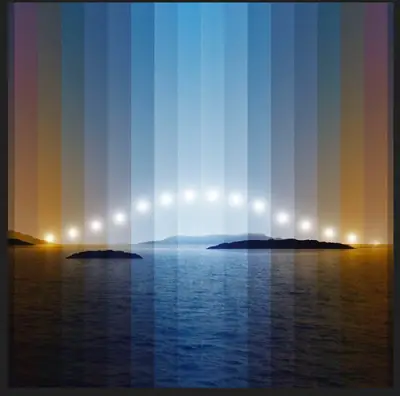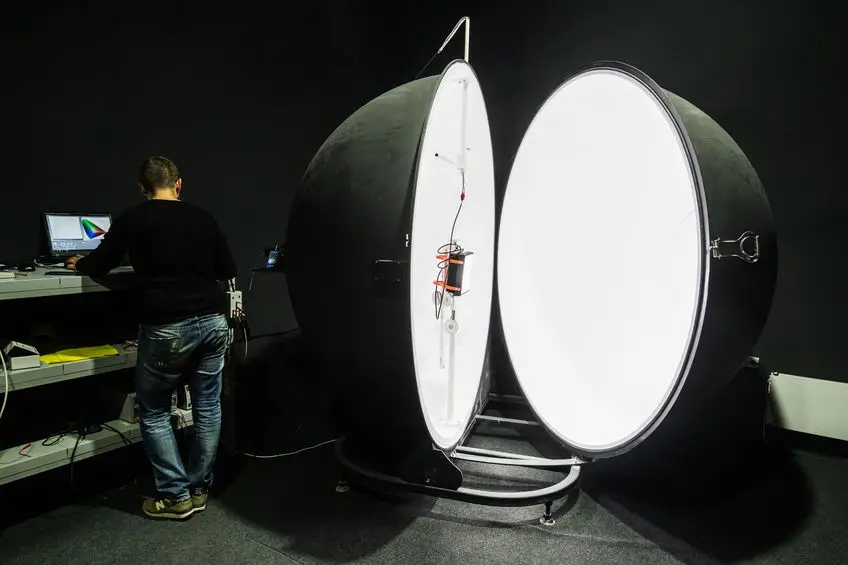What is CRI In Lighting? Colour Rendering Index Explained
If you have ever looked at purchasing a new light bulb or fixture with integrated lights you might have stumbled upon a “CRI“ rating, which most likely ranges somewhere around 70-100. But what exactly does this mean?
In this article, we will explain exactly what CRI is and the importance of a good CRI rating so that you can be confident about buying lighting of good quality.

Contents
What Is CRI?
The Colour Rendering Index (CRI) is the numerical system in which the natural colour accuracy of artificial light sources is measured. CRI is measured on a scale from 0-100, in which 0 means no accurate colour rendering and 100 means perfect colour rendering in relation to natural sunlight.
This is therefore used to measure the “colour quality“ of the light a light source produces, which is why it’s common practice to label lighting products with this number. This system has been in use since the 1960s.
It is also worth noting that the value of CRI can also be referred to as Ra, which is a more common way to refer to it in certain parts of the world. Ra stands for Rendering Average, which refers to the average value of all colours a light source renders within the visible light spectrum.
How CRI Is Measured
Now that we’ve looked at what CRI actually is we can start to look at how it is actually measured. The first thing to establish when it comes to this is that the CRI system is completely based on the colour rendering of the sun.
CRI is based on the sun due to the sun being the most natural light source we have and because it renders colours in a way we consider natural. This is desirable because objects that appear red under the sun might appear orange or yellow under bad artificial light.
Colour Samples
So knowing that CRI is based on the sun, how does it actually get measured? It gets measured based on comparing specific colour samples of artificial lighting to that of the sun. This essentially means that if a light source can manage to display all these specific colours completely accurately to how the sun would, it would achieve a CRI rating of 100.

These colour samples come in two separate sets, one of which is R1-R8 and then later the additional colours R9-R14.
The original set (R1-R8) consists of rather low saturated colours which are evenly distributed across the visible colour spectrum, with the idea to test lighting across the entire spectrum on a harder standard.
This however was deemed to be ineffective at deciding colour rendering since it leaves a lot of room for error with other important colourings. Therefore they created an extra supplementary group of colours to use when grading the CRI of a light.
The first four samples of the supplementary range are meant to test lighting for highly saturated colours. The last two are meant to represent skin colour and a leaf-coloured green. These colours were chosen in order to get a more well-rounded colour reading, as well as provide the basis for judging how natural the light looks.
Despite there being another set of colours added, only R1-R8 are actually used to calculate the Ra value. This causes some criticism for how valid the CRI value becomes since it doesn’t really tell you how well a light source reflects colours since it leaves out a lot of important colours, mainly the saturated red of R9.
The reason why these saturated colours are important is that a lot of applications deal with vibrant colours which need illumination, for example in art galleries or in film lighting.
Colour Temperature
It can also be important to note that the colour temperature (Kelvin, K) is important when determining the CRI of a light. This is because the sun changes colour temperature throughout the day, which causes inaccuracies when measuring lights at different K values.

For this reason, it has been decided that you can only compare the CRI of lights with the same K value.
This way it is still possible to compare lights to the sun at all times but instead compare it at different times of the day when it reaches the same K. Click here for a more detailed explanation of Colour Temperature (K).
The reason it’s important to make these distinctions is that as the sun changes from warm to cool it changes its spectral distribution. This makes it so that the sun will render colours very differently from bright noon compared to dull dawn.
Measuring Process
Now that we know the basics of how CRI measuring works, how is it actually measured in practicality? The process is actually quite simple nowadays.
Before technology started taking over we had to compare the results of the lighting by eye and assign a value from 0-100 on every sample colour, which would then be averaged out to find a CRI/Ra value.
This method simply became obsolete as newer machinery started to become popular. With newer machine technology we can simply place the light source into the machine and light it up in the darkness created by closing it. The machine will then measure the spectral distribution of the light and its general light distribution.
These machines generally look like this;

What Is A Good CRI Rating?
Now that we’ve described the specifics of how CRI is measured, what are considered good values of CRI? It can depend on the application it’s meant for and how high the quality demands are for the lighting but generally speaking, the values of CRI are considered as follows;
CRI 90 or above is widely regarded as excellent colour rendering and is not likely to be subject to discolourations.
CRI 80 or above is regarded as an adequate colour rendering for most scenarios. They are not very likely to be subject to major discolourations.
CRI 70 or above is regarded as an okay colour rendering. At CRI 70 it should be expected that some colours will not appear natural.
CRI 60 or below is regarded as a poor colour rendering. At a CRI of 60 or below it is very likely that colours will look unnatural.

Why CRI Can Be Important
After explaining which CRI ratings are considered good, why is this information important in the first place? It mainly has to do with the quality standards of the desired light depending on its application.
When lighting up naturally colourful objects such as vibrant art or bright fruits you generally want these colours to appear naturally when displayed. This is where a higher CRI rating becomes important because the higher CRI a light source has the more natural objects appear under it.
That said, the dependency of a high CRI is purely based on the application it’s being used for. For example, if you’re lighting up a highway there needs to be more focus on good light distribution and energy efficiency rather than the quality of light.
This is why sodium-based lighting is often used for highways. Their colour rendering abilities are terrible, since they emit almost monochromatic yellow light, giving them a CRI of 5-20 depending on the model. That said, they are extremely energy efficient and produce a lot of light, which makes them a great fit for this application.
On the contrary, when lighting up an art gallery it is extremely important that colours come across as natural and vibrant, making a higher CRI light much more desirable.
While a high CRI above 90-95 is generally only necessary for special applications, it is always good to use lighting with a generally adequate CRI of 80 or above. This is mainly because you may visually notice how things don’t look quite natural at CRI levels below that, it is generally fine though to go below this value.
CRI Ratings Among The Most Common Bulbs
Now that we have a better understanding of the importance of a high CRI rating we should look at which light sources actually provide high CRIs. While this is a summary of the most common bulbs you can check out a more detailed explanation of each bulb in our article about it here.
Incandescent & Halogen
Firstly we can discuss the CRI of incandescent and halogen bulbs. The reason why these two in particular have been grouped together is that their construction is very similar and therefore have the same CRI.
These two bulbs have a CRI rating of 100. This is because both of them are classed as blackbody radiators, which all by default have a CRI rating of 100.
A blackbody radiator can be described as “something that emits light via a heated glow/burning“ in layman’s terms. This by definition makes the sun into a blackbody radiator too, which essentially means that comparing halogen bulbs to the sun is like comparing the same thing to itself.
Light Emitting Diodes (LED)
LED technology has come a long way from where it started 30 or so years ago and today it can compete with most high-CRI-rated lighting products.
While a majority of LEDs have a CRI of around 75-85 it is also possible to find LEDs with a CRI of 90-98. These higher-end LEDs are usually called “full-spectrum“ as they provide a rather even light throughout the entire lighting spectrum, which by default also grants it a high CRI.
Achieving a high CRI in LEDs can be rather difficult since it heavily depends on finding which specific phosphor compound will give it a higher CRI rating. Phosphors are often used to give LEDs a more even spectral distribution and certain phosphor compounds are prone to give it a better CRI rating as a result of this.
Fluorescent Tubes
Fluorescent tube lighting very often has a very good CRI rating, due to the fluorescent powder on the inside of the tube doing a good job of creating an even spectral distribution.
The CRI of fluorescent tubes may depend on the quality of the fluorescent powder, however, they generally have a CRI above 90. Some of them even manage to reach CRIs of around 96-97, which is very high on the scale.
With enough tinkering with the fluorescent powder, it might be possible to reach a CRI of 100 with fluorescent tubes, however, you usually end up losing out on a lot of efficiency when you add more powder.
Compact Fluorescent Lamps (CFL)
Compact Fluorescent Lamps (CFLs) are essentially just regular fluorescent tube lights but compact enough to fit into a regular light fixture, instead of the regular tube it was originally intended for.
Considering that their constructions are mostly the same it would make sense that their CRI is similar, which they for the most part are.
The CRI of CFL bulbs may vary a bit but generally stays around a CRI of 80 or above. It retains most of its natural colour rendering qualities from its fluorescent light generation, however, it is harder to improve this number in CFLs due to the more awkward shape and size.
Summary
So what are the main takeaways from this? Having a high-rated CRI light may not always be a high priority but having a good quality light shine on objects where colour matter can make a massive difference.





